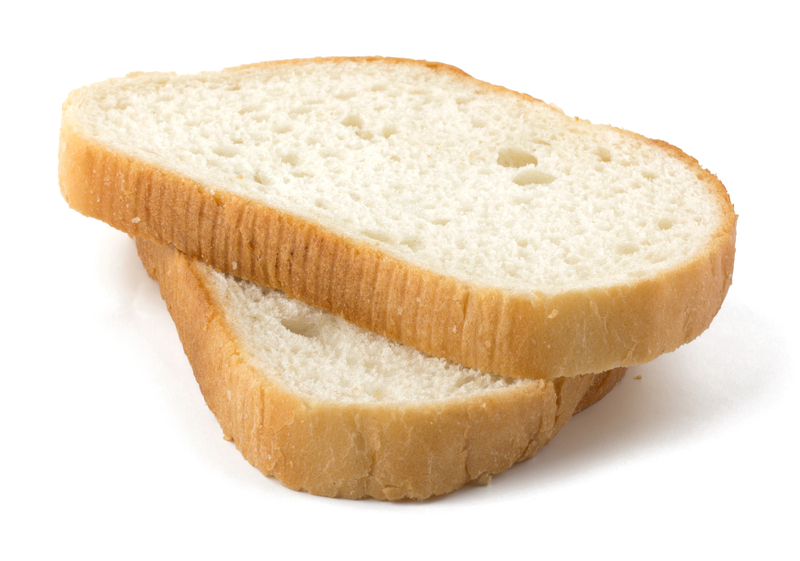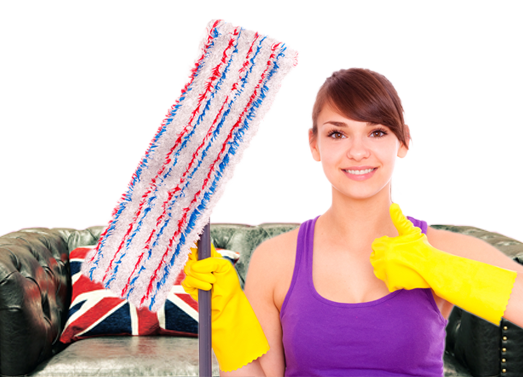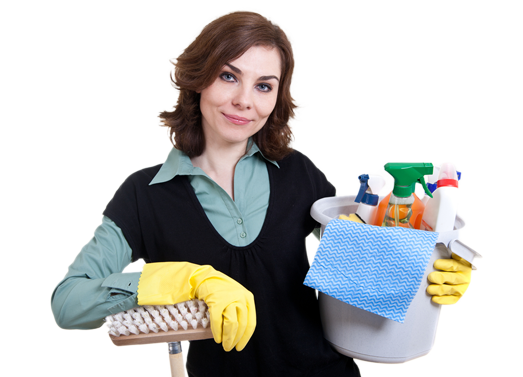Elevate Your Stovetop Cleaning Game: Burnt Residue Tips
Posted on 24/06/2025
Are stubborn burnt residue and tough stains making your stovetop look less than sparkling? Don't fret! With the right strategies, products, and a little effort, you can restore your stovetop to its former glory. In this guide, we'll teach you how to elevate your stovetop cleaning game and tackle even the most persistent burnt-on mess. Read on to discover a comprehensive collection of burnt residue cleaning tips--and learn how to keep your stovetop looking spotless year-round.
Why Does Burnt Residue Build Up on Your Stovetop?
Before diving into advanced cleaning techniques, it's essential to understand why burnt residue accumulates in the first place. When food or liquid spills and is left uncleaned, it can become baked onto the surface by the heat of cooking. Over time, this hardens into tough, black char that won't disappear with a simple wipe. Improper cleaning techniques, infrequent maintenance, or using the wrong products often make the problem worse.
- Repeated Heating: Spills harden and carbonize due to repeated exposure to heat.
- Sticky Substances: Sugar-rich foods — like syrups or sauces — can bond aggressively with stovetop surfaces.
- Neglect: The longer residue sits, the harder it is to remove without damaging your stovetop.
Let's explore how you can effectively clean burnt stovetops and implement preventative measures to keep them shining.

Essential Supplies for Stovetop Burnt Residue Cleaning
The right tools and products make all the difference. Whether you have a gas, electric, or ceramic glass stovetop, these supplies will help you elevate your burnt residue cleaning routine:
- Non-abrasive sponges and soft cloths
- Baking soda
- White vinegar
- Lemon juice
- Razor blade scraper (for glass surfaces only!)
- Commercial stovetop cleaning solutions
- Dish soap
- Toothbrush or small scrub brush
- Paper towels or microfiber towels
- Hot water
*Always remember to consult your stovetop's manufacturer manual before using any new cleaning method or product!
Step-by-Step Guide: How to Remove Burnt Residue from Your Stovetop
1. Safety First
Unplug or Turn Off the cooktop and let all surfaces cool before cleaning. Never attempt to clean a hot stove to avoid burns and damaged surfaces.
2. Basic Cleaning (The Foundation)
Begin with a surface-level wipe down to remove loose crumbs, grease, and debris:
- Wipe the stovetop with a damp cloth to pick up food particles.
- Use mild dish soap and warm water for any grease spots.
- Rinse with a clean, damp cloth and dry thoroughly.
3. Loosen Burnt-On Residue
Soften stubborn burnt residue before scrubbing to minimize the risk of scratching:
- Soak a cloth or paper towel in hot water and lay it over the burnt spot for 15-30 minutes.
- This helps loosen char and sticky residue, making the next steps easier.
4. Baking Soda and Vinegar Magic
This classic combo is both effective and gentle for removing burnt residue from a stovetop:
- Sprinkle baking soda liberally over the burnt areas.
- Spray or drizzle white vinegar onto the baking soda -- it will fizz and bubble, loosening grime.
- Leave for 10-15 minutes.
- Gently scrub with a non-abrasive sponge or microfiber cloth.
- Wipe clean with a damp towel.
5. Targeted Burnt Residue Removal Techniques
Difficult spots? Try these stovetop burnt-on residue solutions:
- Glass or Ceramic Surfaces:
- Apply a paste of baking soda and water to burnt spots.
- Allow it to sit for 20 minutes.
- Use a razor scraper at a 45-degree angle to gently lift burnt material (never gouge or use the corner).
- Wipe and repeat if needed.
- Steel or Enamel Stovetops:
- Use a toothbrush dipped in baking soda paste for crevices and corners.
- Try lemon juice for removing stains and lingering odors.
- For extensive residue, use a commercial cleaner suited for your stovetop material.
Note: Never use steel wool, coarse scrubbers, or harsh cleaners as these can scratch and damage the surface.
6. Rinse and Buff For a Gleaming Finish
- Once burnt residue is gone, wipe the entire stovetop with a clean damp cloth to remove any cleaning residues.
- Dry with a microfiber towel for a streak-free shine.
Natural Stovetop Burnt Residue Cleaning Methods
If you prefer eco-friendly cleaning solutions, these natural ingredients are safe, effective, and gentle on your stove:
- Lemon and Baking Soda: Cut a lemon in half, dip the cut end into baking soda, and scrub burnt spots. The acidity helps break down char, while baking soda lifts grime.
- White Vinegar Spray: Fill a spray bottle with vinegar. Spray generously on burnt patches, let soak for several minutes, then wipe away for a clean finish.
- Salt Paste: Make a thick paste of salt and a small amount of water. Apply to the burnt residue, let sit, and scrub with a soft brush.
- Hydrogen Peroxide (for heavy-duty cases): Pour a small amount on burnt-on stains, cover with baking soda, and scrub after a 15-minute wait.
Effective Preventative Measures for a Spotless Stovetop
Keeping your stovetop clean and residue-free is easier than you think with these proactive habits:
- Wipe up spills immediately: Address accidents as soon as possible to prevent burnt-on messes.
- Use drip pans or liners: These catch spills and protect the actual stovetop.
- Avoid overfilling pots and pans: This reduces the risk of boil-overs.
- Follow a regular cleaning schedule: Quick daily wipe-downs prevent build-up.
- Keep burners and heating elements clean: Remove food and grease regularly for even cooking and less risk of burning residue.
When to Use Commercial Burnt Stovetop Cleaning Products
While home remedies work in most instances, sometimes heavy-duty stains require specialty help. Use commercial stovetop cleaners if:
- The burnt residue is especially thick or has been left for a long time.
- Your stovetop's maintenance manual recommends a specific brand/formula.
- Natural solutions didn't fully remove the stains.
Always check for compatibility with your stovetop material. Opt for non-abrasive, residue-free formulas to protect surfaces and enhance shine. Apply with a soft cloth, following the manufacturer's directions.
Extra Tips to Elevate Your Stovetop Burnt Residue Cleaning
- Regularly Remove Burner Grates: For gas stoves, wash grates in warm soapy water, rinse, and let them dry before replacing.
- Deep Clean Knobs and Controls: Remove (if possible) and clean with mild soap and water to prevent grime build-up.
- Clean Underneath: Slide out trays or lift elements (as appropriate) to clean food from under the stovetop.
- Use a Protective Polish: Once clean, some stovetops benefit from a protective polish or conditioner for easier future cleaning and added shine.

Frequently Asked Questions About Burnt Residue Stovetop Cleaning
How do I clean burnt residue off a glass stovetop?
Use a combination of baking soda paste, soaking, and a razor blade scraper held flat against the surface to gently lift residue. Never use abrasive pads or harsh chemicals. Follow with a glass stove cleaner for a polish.
Can I use steel wool or abrasive pads on my stovetop?
No! Steel wool and abrasive pads will scratch and permanently damage most stovetop surfaces, especially ceramic or glass. Always use non-abrasive sponges or microfiber cloths.
What's the best homemade cleaner for burnt stovetops?
Most experts recommend a baking soda and vinegar mixture for effective, natural cleaning. Lemon juice or hydrogen peroxide can also be used for tougher stains.
How often should I deep clean my stovetop?
A full deep clean should be done at least once a month. However, wiping up spills and using a mild cleaner after every use will minimize burnt-on residue and keep your appliance looking new.
Conclusion: Make Stovetop Cleaning Easier Than Ever
Maintaining a spotless, burnt-residue-free stovetop is more achievable than it may seem. With the actionable tips, DIY cleaners, and preventative strategies outlined here, you can elevate your stovetop cleaning game and keep your kitchen at its sparkling best.
Remember, the keys are consistency, gentleness, and using the right methods for your specific stovetop type. The effort is well worth it--a gleaming appliance enhances your kitchen's appearance and makes cooking far more enjoyable.
- Ready to transform your kitchen? Start today with these expert stovetop burnt residue tips and enjoy a cleaner, healthier, and more beautiful cooking space!




